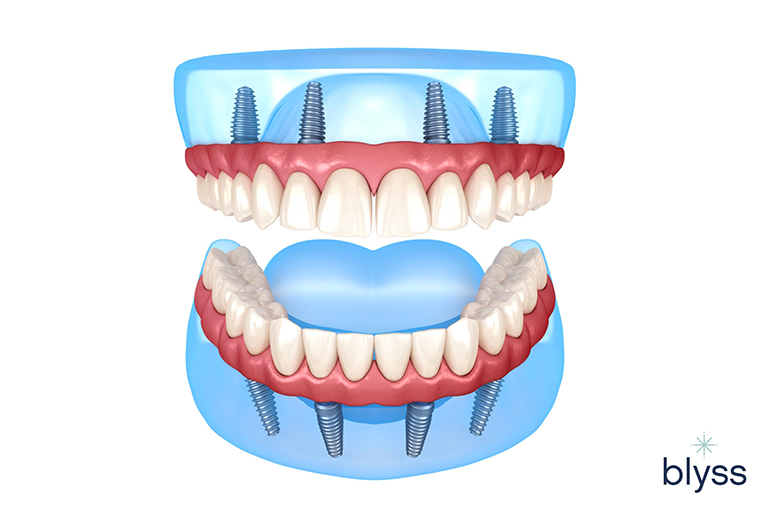Getting My Dental Sense To Work
Getting My Dental Sense To Work
Blog Article
Some Ideas on Dental Sense You Need To Know
Table of ContentsSome Known Facts About Dental Sense.The Definitive Guide to Dental SenseSome Known Incorrect Statements About Dental Sense The 6-Second Trick For Dental Sense
are clinical gadgets surgically implanted right into the jaw to recover an individual's capability to chew or their look. They give assistance for fabricated (phony) teeth, such as crowns, bridges, or dentures. When a tooth is shed due to injury or condition, an individual can experience issues such as fast bone loss, faulty speech, or changes to eating patterns that lead to discomfort.Oral dental implant systems consist of a dental implant body and oral implant joint and may additionally consist of an abutment addiction screw. Root canal procedure. The oral implant body is surgically put in the jawbone instead of the tooth's root. The dental implant joint is typically connected to the dental implant body by the joint addiction screw and extends via periodontals into the mouth to sustain the connected artificial teeth
(https://www.tripadvisor.in/Profile/dentalsense1)Structure of The Dental Implant System choosing dental implants, talk with your oral service provider concerning the possible benefits and risks, and whether you are a candidate for the treatment. Points to think about: Your overall health is an important factor in determining whether you are an excellent prospect for dental implants, how long it will certainly require to heal, and the length of time the dental implant may stay in area.
Smoking cigarettes may impact the healing procedure and lower the lasting success of the dental implant. The healing procedure for the dental implant body may take numerous months or longer, throughout which time you usually have a short-term joint instead of the tooth. the dental implant treatment: Thoroughly follow the dental health instructions offered to you by your dental service provider.
The Definitive Guide for Dental Sense
Implant failure can result in the requirement for an additional procedure to deal with or replace the implant system. Recovers the ability to chew Recovers cosmetic appearance Assists maintain the jawbone from shrinking due to bone loss Maintains the health of the surrounding bone and gum tissues Helps keep nearby (neighboring) teeth stable Enhances lifestyle Damage to surrounding all-natural teeth throughout implant placement Injury to the surrounding tissues during surgical procedure, such as sinus perforation Injury during surgery (for example, fracture of surrounding jawbone) Insufficient feature, such as really feeling like the teeth do not attack with each other generally A sensation that the tooth is loose or twisting in location resulting from a joint screw loosening up Implant body failing (looseness of the implant body) due to systemic infection, which may be most likely in people with uncontrolled diabetes due to local infection in bone and gums supporting the implant body due to delayed healing, which may be more probable in clients who smoke Difficulty cleaning the gum tissues around the dental implant, leading to bad dental hygiene Neglected gum condition Post-surgical feeling numb because of nerve impingement or damage Always notify healthcare providers and imaging technicians that you have dental implants prior to any type of magnetic vibration imaging (MRI) or x-ray treatments.
FDA is not mindful of any unfavorable events reported for MRI advice or x-ray treatments with dental implants. Oral implants systems are commonly constructed from products that follow international agreement requirements of the International Organization for Standardization (ISO) or ASTM International. These criteria have information of what makes a safe product.

An oral implant is a framework that changes a missing tooth. With screw-like gadgets, the doctor inserts an implant right into the jawbone, and it acts as a support for an artificial tooth, called a crown.
What Does Dental Sense Do?
Some individuals are not qualified for oral implant surgical treatment. It is for dental specialists to operate people with: acute illnessuncontrollable metabolic diseasebone or soft tissue condition or infectionIf these concerns are settled, an individual can have the surgical procedure. In, oral specialists refrain from operating individuals with: If individuals with any of the above undergo oral implant surgical procedure, there is a greater danger of the implant falling short.

Oral dental implant surgery is an individualized process. It's not the exact same for every person. But the following provides a basic review of what you can expect your dental professional, oral cosmetic surgeon, periodontist or prosthodontist to do: Position the dental implant operatively. Offer you time to recover. Affix the post and final crown, bridge or denture.
Next, your surgeon will thoroughly put the dental implant into your jaw. Your cosmetic surgeon will reposition your gums and close the laceration with stitches. If your dental implant is near the front of your mouth, your dental expert will make a temporary tooth for you to wear till you recover. That method, you won't have a gap in your smile while you recoup.
Dental Sense - Questions
Throughout the recovery phase, your jawbone must fuse to the oral implant. This process can take anywhere from 3 to 9 months.
Once your implant heals, your dental practitioner can attach the joint (small port blog post) and your last remediation (crown, bridge or denture). This generally takes about one hour to finish and might require a second minor surgical treatment. You shouldn't feel any kind of pain during your oral implant treatment due to the fact that your supplier will certainly use medication to numb your periodontals.
Report this page